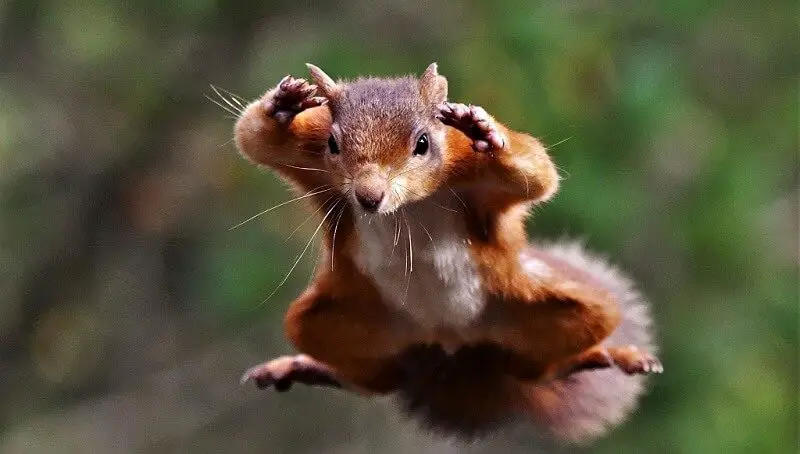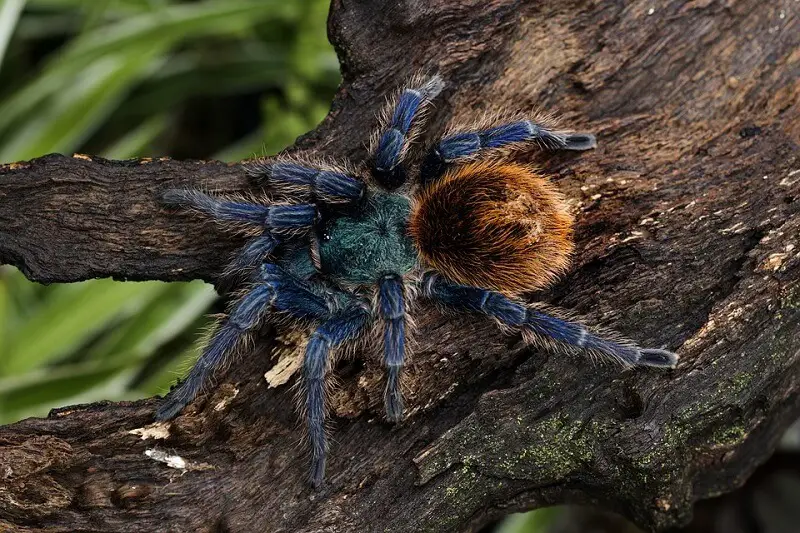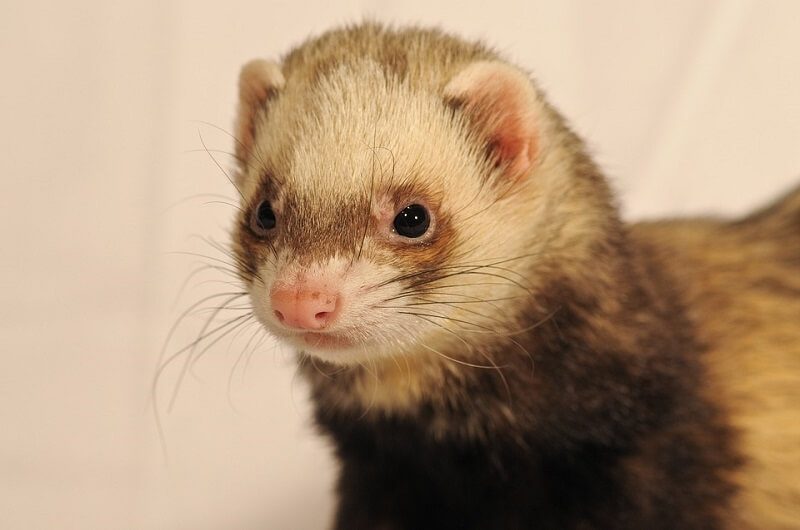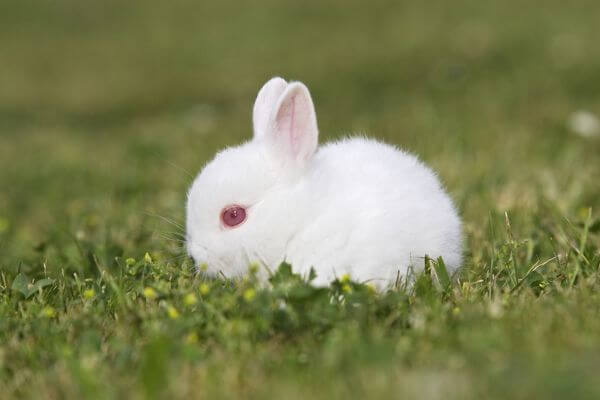When it comes to heights, you must agree that squirrels are champions among mammals. You surely know those viral videos of squirrels that jump into what it seems like too high up to be ok, like a tall tree or a building, only to land as if nothing happened and without a scratch.
So can squirrels survive terminal velocity falls?
Squirrels will be able to jump from amazing heights and although the fall might hurt them, they will survive most of the time. These mammals are wonders of physics, having special attributes that would help them survive any fall with minimum damage. This is especially possible due to their very small weight. They also know how to use their body to make it seem as if they brake right in the air.
Online videos will show squirrels jumping voluntarily, with a lot of confidence, legs fully extended, going through the air, ultimately creating a parachute effect that would create a strong resistance to the wind. The bushy tail, along with its small weight and extended legs make all of this possible.
You might also like my articles on squirrel poop and the scratch of a squirrel.
An interesting aspect is that height actually helps the squirrel. This means that the higher the jump, the more chances it will have to survive. This is because a higher jump will enable the mammal to take advantage of the parachute effect more. There are a lot of cases of squirrels that found smaller trees to jump from, only to hurt themselves quite badly during the fall.
Why would squirrels survive falling from very high places?
The most important thing that would help a squirrel survive high falls is its very light body mass. As you surely know from school, the force of gravity on earth is constant, and the speed with which an object will fall will depend on its mass.
The average squirrel won’t weigh more than 300 grams, which is a very small weight for a mammal. For comparison, most adult cats weigh somewhere around 4,800 grams, which means that the average cat is around 16 times heavier than the average squirrel.
But this alone wouldn’t be enough to enable it to escape such high falls. This mammal is also equipped with unique physical qualities and amazing dexterity.
It’s very important to understand the impressive qualities of a squirrel’s tail as well, which is usually close to the size of its body, but very wide and bushy.
Furthermore, squirrels are able to almost fully extend their legs, in this way increasing the surface of their body, which creates the parachute effect that will slow them down in the air. Along with all its other qualities, this will make it go through the air almost as if it is flying.
Their strong leg muscles are perfect for making impressive jumps and climbing all kinds of trees, but they can also act as shock absorbers that take most of the landing shock when they finally reach the ground.
What is a squirrel’s terminal velocity?
When something falls, two very important forces will act on it. One is gravity, which pulls it downwards, while the other is air resistance, which is pushing in the opposite direction of the fall.
As the velocity of an object increases, so does the air resistance, and it will be proportional. At some point, the body will reach something called “terminal velocity”, which is the moment when the acceleration will be zero, meaning that the speed will not increase regardless of the distance of freefall left.
According to recent studies, squirrels have a terminal velocity of around 10.28 m/s or about 23 mph.
In this case, higher is better
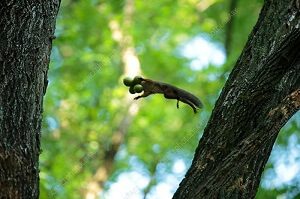 It might sound weird for someone as heavy as a human, but it is true: the higher the squirrel falls, the more likely it is to will survive.
It might sound weird for someone as heavy as a human, but it is true: the higher the squirrel falls, the more likely it is to will survive.
Using its skills to create a parachute effect, a squirrel is able to bring down its terminal velocity to about 37 km/h. For comparison, a human’s average terminal velocity is around 193 km/h.
All of the above combined will give this mammal an incredibly high survival rate, even when they reach this terminal speed.
As I already said, it can happen that a squirrel will get injured more when jumping from a smaller tree than when it is jumping from a very tall building. This is because as it falls, it needs enough time to find an optimal position for landing and to use the friction with air to decrease the fall speed.
Squirrels don’t usually fall from trees
It rarely happens that a squirrel will fall from a tree. They will usually jump from one tree to another when in nature and they have the necessary capabilities to hold on to trees without issues.
They would almost seem like parkour runners for us humans because they are very skilled jumpers and climbers. They will have no problem jumping from one tree to another, but also from one house roof to another.
It will use its very sharp claws to stick to tree bark and then climb up through branches of all sizes. These movements, although they might look random, are very precise and calculated.
You will notice a short thumb and four long fingers on the front feet, with two, pointed down and two up, when they are climbing.
These all, together, will make squirrels great climbers, jumpers, and almost-flyers.
